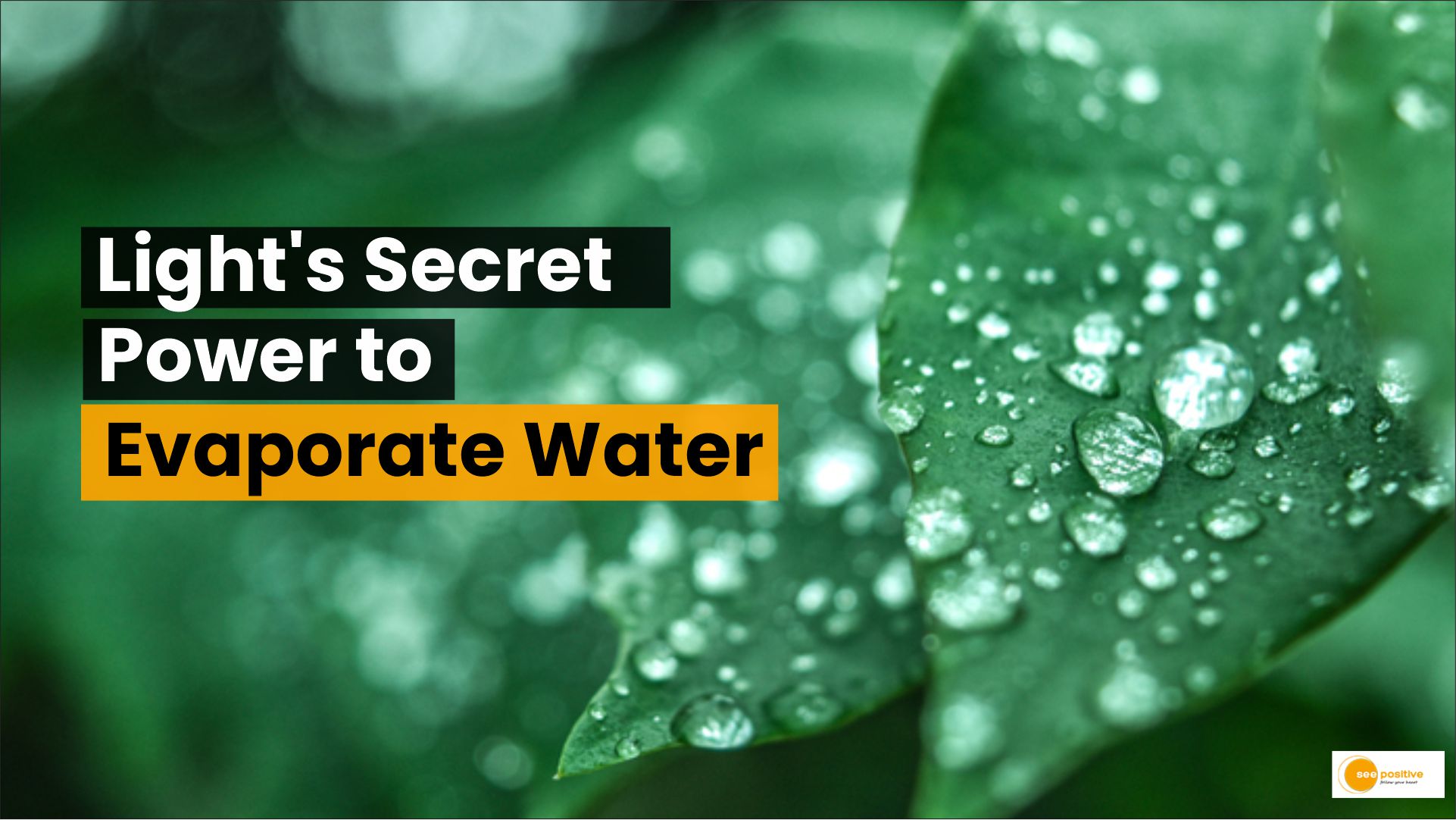In a remarkable breakthrough, scientists at the Massachusetts Institute of Technology (MIT) have uncovered a fascinating phenomenon: light can cause water to evaporate without the need for heat. This unexpected revelation challenges our conventional understanding of evaporation, and its potential applications are nothing short of groundbreaking.
Let’s delve into this astonishing discovery and its far-reaching implications.
Unveiling the Mystery
Researchers at MIT initially observed an intriguing occurrence. Water enclosed within a hydrogel material was evaporating at a rate that exceeded the amount of heat it was receiving. This observation prompted further experiments and simulations, leading to the confirmation that, under specific conditions, light can directly trigger evaporation where water meets air. Surprisingly, this light-induced evaporation was found to be even more efficient than the traditional heat-induced evaporation process.
The Far-Reaching Implications
The discovery of light-induced evaporation has wide-ranging implications that could revolutionize various fields:
- Climate Modeling:
This phenomenon could significantly impact the formation and evolution of fog and clouds. Integrating this newfound knowledge into climate models is crucial for more accurate weather predictions.
- Solar-Powered Desalination:
In industrial processes like solar-powered desalination of water, this discovery could eliminate the need to convert sunlight into heat before initiating evaporation. This has the potential to make desalination more efficient and environmentally friendly.
Understanding the Science
One of the most intriguing aspects of this research is that water itself does not absorb light significantly, which is why we can see clearly through clean water. To investigate solar evaporation for desalination, the researchers initially introduced light-absorbing particles into the water to convert sunlight into heat. However, they came across the work of another group that achieved evaporation rates surpassing thermal limits without the use of heat. These experiments involved water held within a hydrogel, sparking the MIT team’s curiosity.
The Science Behind Light-Induced Evaporation
The researchers theorized that light may be responsible for the excess evaporation. They conducted experiments using hydrogels, monitoring the surface’s response to simulated sunlight of different colors. The evaporation rate was measured by weighing the mass lost to evaporation and monitoring the temperature above the hydrogel surface. The researchers found that the effect varied with the color of light, with green light at a particular wavelength producing the most significant results. This color dependence strongly indicates that light itself, not heat, causes the additional evaporation.
Validation of Findings
To confirm their discovery, the researchers repeated the experiments using electricity to heat the material, excluding light. Surprisingly, the evaporation rate did not exceed the thermal limit, providing further evidence that light is the key factor behind the increased rate of evaporation.
The Marvel of Light and Hydrogel
While water and the hydrogel material individually do not absorb much light, their combination creates a powerful absorber. This unique synergy allows the material to efficiently harness the energy of solar photons, surpassing the thermal limit without the need for dark dyes for light absorption.
Conclusion
The revelation that light can make water evaporate without heat is a remarkable breakthrough in the world of science and technology. It challenges our existing knowledge of evaporation and opens doors to a wide array of possibilities, from climate modeling to sustainable desalination. This discovery reminds us that the mysteries of the natural world are endless, and with each revelation, we come one step closer to unlocking its secrets.


